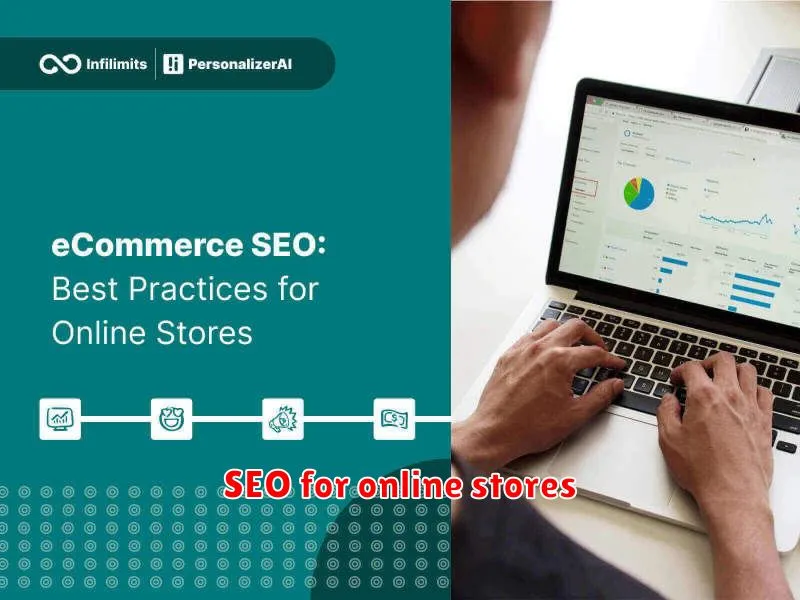Are you ready to significantly boost your e-commerce sales? Harnessing the power of SEO (Search Engine Optimization) is no longer optional; it’s essential for online success. This comprehensive guide will equip you with the SEO strategies needed to drive more organic traffic to your online store, ultimately leading to increased conversions and a significant rise in revenue. Learn how to optimize your website, product listings, and content to rank higher in search engine results pages (SERPs), attracting a larger audience of potential customers actively searching for the products you offer. Discover the secrets to unlocking e-commerce SEO and achieving your sales goals.
Why SEO is Critical for E-commerce Success
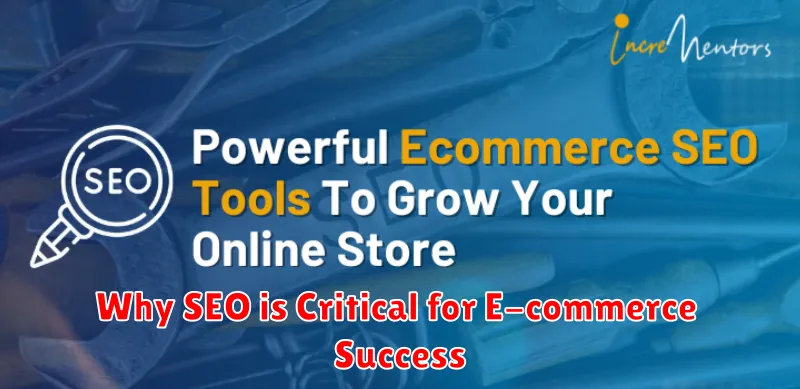
In today’s digital landscape, search engine optimization (SEO) is no longer optional for e-commerce businesses; it’s essential for survival and growth. SEO drives organic traffic, meaning customers actively searching for products like yours find your website without paid advertising. This translates to higher visibility and a significant advantage over competitors who rely solely on paid ads.
Increased brand awareness is another crucial benefit. Effective SEO builds your brand’s online presence, establishing you as a trusted authority in your niche. Consistent ranking for relevant keywords reinforces your brand’s credibility and attracts more potential customers.
Furthermore, SEO improves conversion rates. By optimizing your website for specific search terms, you attract highly targeted traffic – individuals actively seeking the products you offer. This targeted audience is more likely to convert into paying customers, boosting your return on investment (ROI).
Finally, SEO offers long-term sustainability. Unlike paid advertising, which requires continuous financial investment, effective SEO yields sustained organic traffic over time. This creates a more stable and predictable revenue stream, fostering sustainable business growth.
Keyword Research for Product Listings
Keyword research is crucial for boosting e-commerce sales through SEO. It involves identifying the terms customers use when searching for products like yours.
Effective keyword research begins with brainstorming. List relevant terms related to your products, considering different variations and levels of specificity. Think about what your ideal customer might type into a search engine.
Utilize keyword research tools to expand your list and uncover additional opportunities. These tools analyze search volume, competition, and related keywords, providing valuable insights into customer search behavior. Focus on keywords with high search volume and manageable competition.
Once you have a strong list of keywords, strategically incorporate them into your product titles, descriptions, and tags. Use keywords naturally within the text, prioritizing those with the highest search volume and relevance.
Regularly monitor keyword performance using analytics tools to track your progress and adapt your strategy as needed. Identify underperforming keywords and replace them with more effective options.
By focusing on relevant, high-volume keywords and consistently optimizing your product listings, you can significantly improve your e-commerce store’s visibility and drive more sales.
How to Optimize Product Pages for Higher Rankings
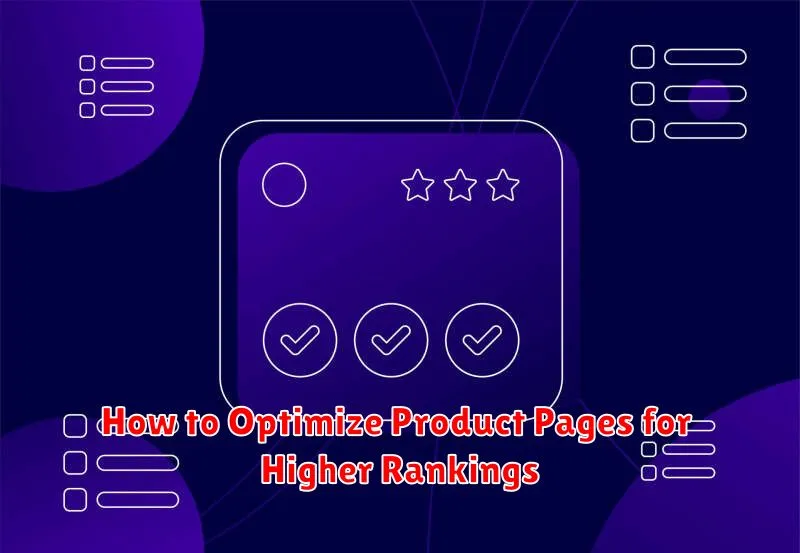
Optimizing product pages for higher search engine rankings is crucial for e-commerce success. Keyword research is the foundation. Identify relevant keywords your target audience uses to search for products like yours. Use these keywords naturally within your product title, description, and meta descriptions.
High-quality product images are essential. Use clear, well-lit images showcasing your product from multiple angles. Optimize image file names and alt text with relevant keywords.
Structured data markup helps search engines understand your product information. Implement schema markup for product details like price, availability, and ratings. This improves your visibility in search results and potentially triggers rich snippets.
Mobile optimization is non-negotiable. Ensure your product pages are responsive and load quickly on all devices. A slow-loading page will negatively impact your rankings and user experience.
Internal linking is vital for site navigation and SEO. Link relevant product pages to each other and to your homepage. This improves site architecture and distributes link equity.
Finally, monitor your product page performance using analytics tools. Track keyword rankings, traffic, and conversion rates. Use this data to refine your SEO strategy and improve your product page optimization over time.
The Importance of Blogging for E-commerce
Blogging is a crucial component of a successful e-commerce strategy. It allows you to establish your brand as a thought leader in your industry, attracting potential customers actively searching for information related to your products or services.
Through consistent, high-quality blog posts, you can improve your website’s SEO (Search Engine Optimization). By targeting relevant keywords within your blog content, you increase the visibility of your website in search engine results pages (SERPs), driving more organic traffic to your e-commerce site.
Blogs provide an opportunity to build trust and credibility with your audience. Sharing valuable information, such as product reviews, tutorials, or industry news, demonstrates your expertise and builds a stronger connection with potential customers, making them more likely to make a purchase.
Furthermore, blogs offer a platform to showcase your products naturally within the context of helpful content. This approach is far more effective than intrusive advertising, leading to higher conversion rates. By providing solutions and answering customer questions, you establish your brand as a valuable resource, increasing customer loyalty and driving sales.
Finally, blogs can help improve your website’s user engagement. Engaging content keeps visitors on your site for longer periods, reducing bounce rates and signaling to search engines that your website is valuable, further strengthening your SEO performance. This ultimately translates to higher sales for your e-commerce business.
Using Backlinks to Improve Search Visibility
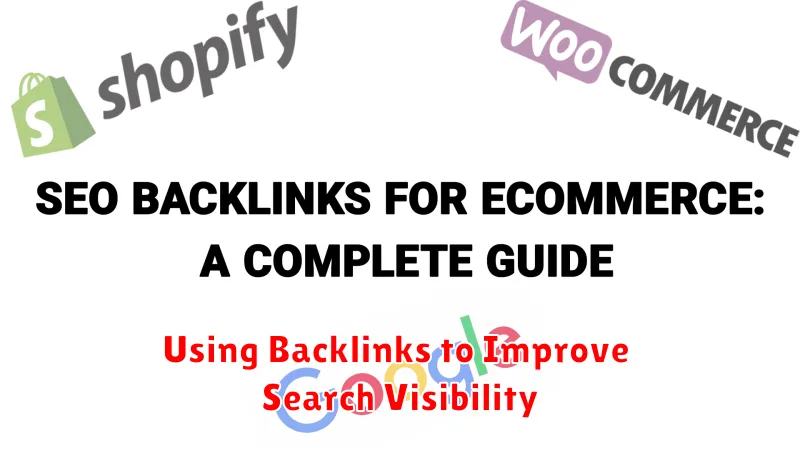
Backlinks are crucial for improving your e-commerce store’s search engine visibility. Search engines view backlinks from reputable websites as a vote of confidence, indicating your site offers valuable content. The more high-quality backlinks you acquire, the higher your site will likely rank in search results.
Focus on earning backlinks from relevant websites within your industry. These contextual backlinks carry more weight than those from unrelated sites. Guest blogging, broken link building, and reaching out to influencers are effective strategies for acquiring high-quality backlinks.
Monitor your backlink profile regularly using SEO tools. Identify and address any low-quality or spammy backlinks, as these can negatively impact your search engine rankings. A strong, clean backlink profile is essential for long-term search engine optimization success.
Remember that building backlinks takes time and effort. Focus on creating high-quality content that naturally attracts links. Avoid black hat SEO techniques, such as buying backlinks, which can harm your website’s reputation and search engine rankings. Patience and consistency are key to building a strong backlink profile.
Technical SEO Strategies for Online Stores
Technical SEO is crucial for e-commerce success. It ensures search engines can easily crawl and index your website, leading to improved rankings and increased visibility.
Website Speed Optimization is paramount. Slow loading times frustrate users and negatively impact search engine rankings. Optimize images, leverage browser caching, and use a Content Delivery Network (CDN) to improve performance.
Mobile Friendliness is essential. Google prioritizes mobile-first indexing. Ensure your website is responsive and provides a seamless user experience across all devices.
Structured Data Markup (Schema) helps search engines understand your product information. Implementing schema markup for products, reviews, and prices improves click-through rates and rich snippet visibility in search results.
XML Sitemap Submission allows search engines to efficiently crawl your website, especially large e-commerce stores with numerous products. Submit your sitemap to Google Search Console and Bing Webmaster Tools.
URL Structure Optimization is vital. Use clear, concise, and keyword-rich URLs to improve navigation and search engine understanding of your pages. Avoid long, complex URLs.
HTTPS Security is a ranking factor. Ensure your website uses HTTPS to encrypt data and build user trust. A secure website is essential for online transactions.
Robots.txt Optimization controls which parts of your website search engine crawlers can access. Properly configuring your robots.txt file prevents search engines from crawling unwanted pages.
Regularly monitoring and analyzing your website’s technical SEO performance using tools like Google Search Console is crucial for identifying and resolving issues promptly. This proactive approach ensures your online store remains optimized for search engines.
How to Optimize Images for Better SEO
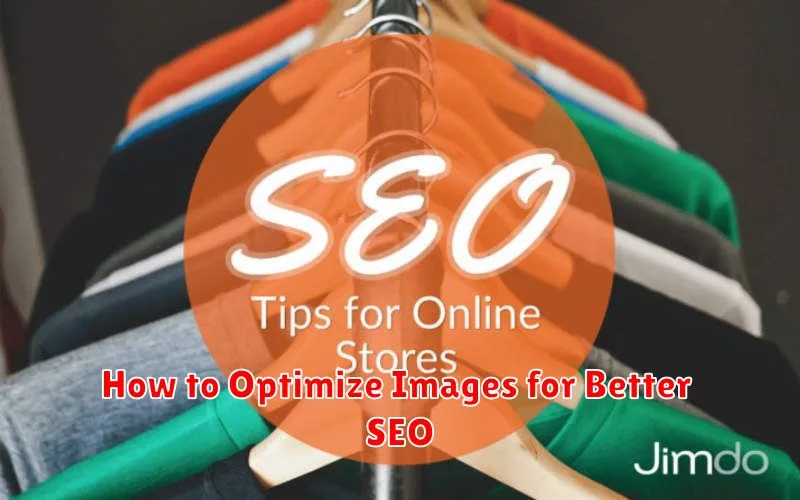
Optimizing images is crucial for e-commerce SEO. Search engines can’t interpret images directly, so you need to help them understand your visuals’ context.
Use descriptive and relevant filenames. Instead of “image1.jpg,” use “red-dress-summer-sale.jpg.” This provides crucial context to search engines and users.
Write concise and informative alt text for each image. Alt text describes the image for visually impaired users and search engine crawlers. Focus on keywords related to your product and its features.
Compress your images without sacrificing quality. Larger files slow down your website, negatively impacting SEO and user experience. Many free online tools can help with this.
Use the correct image format. JPEGs are ideal for photographs, while PNGs are better for graphics with sharp lines and text. Consider WebP for superior compression.
Ensure your images are properly structured within your website’s HTML. Use appropriate tags and avoid nested image elements for efficient loading.
Implement a site map that includes your images to ensure search engines can easily find and index them. A well-structured site map improves the chances of images ranking higher in search results.
Monitor your image SEO performance using Google Search Console and other analytics tools. Track your keyword rankings and identify areas for improvement.
Measuring SEO Performance and Adjusting Strategies
Measuring the effectiveness of your SEO efforts is crucial for maximizing e-commerce sales. Key Performance Indicators (KPIs) to track include organic traffic, keyword rankings, conversion rates, and bounce rate. Regularly analyzing these metrics provides valuable insights into your strategy’s success.
Google Analytics and Google Search Console are invaluable tools for monitoring these KPIs. They offer detailed data on website traffic sources, user behavior, and keyword performance. By analyzing this data, you can identify high-performing keywords and pages, as well as areas needing improvement.
Based on your analysis, adjust your SEO strategy accordingly. If specific keywords aren’t performing well, consider revising your content optimization or targeting different keywords. A high bounce rate might indicate poor website usability or irrelevant content, requiring improvements to site design and content quality. Similarly, low conversion rates may necessitate adjustments to your call-to-actions and overall website experience.
Regular monitoring and adaptive adjustments are key. SEO is an ongoing process, not a one-time fix. Consistent optimization based on data-driven insights ensures your e-commerce business stays ahead of the competition and achieves its sales goals. The iterative nature of SEO requires continuous evaluation and refinement.

